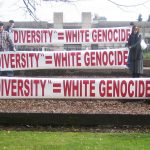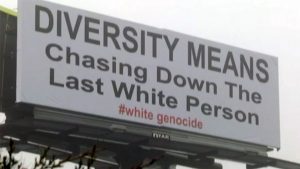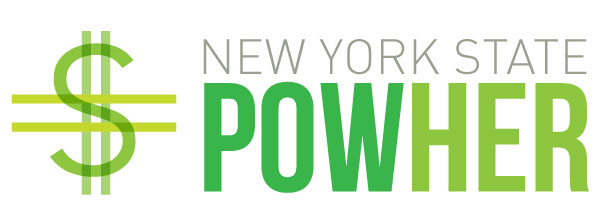Fighting Words
I am a pacifist. I do not own a gun or any other weapons. I use words to combat to combat ignorance, hatred, and brutality and it is definitely time to fight.
The increasingly dangerous assault on diversity, equity, inclusion, and access (DEIA) requires a coordinated and sustainable defense.
As a small business owner, I usually avoid entering into political discussions, but the body politic is at the greatest risk of my entire life. This has been many decades in the making and wishing it away, compromising, and conciliating clearly has not worked. We are in danger, and we must take action. All of us. Now. Failing means that we fall prey to those who, among other assaults on justice and equality, are trying to legalize child labor while simultaneously making certain human beings illegal. They are dangerous and relentless and amoral.
Those who have been conspiring to push civilization back to a time when less than one percent of the global population had 99 percent of the food, shelter, and representation depend on our division, frustration and exhaustion. They rely on our emotional responses to their irrational and illegal conduct. They expect us to eventually give up our rights and access and freedom.
I have interviewed many hundreds of people during investigations of discrimination claims. It is very easy to tell when most people are lying. It is equally difficult to tell when practiced liars lie. That is because they literally practice. They repeat their lies many times before sharing them with the public. Those lies are quoted in the media and further broadcast and amplified. The most practiced liars find others who will deny the truth with them begin quoting their lies, further amplifying them. Again, and again and again. This methodology is incredibly effective as those who do not know the truth can be effectively bamboozled.
Those who are adept at implementing this methodology are rewarded. Some have become phenomenally powerful members of government and industry as a result of lying. There seem to be no repercussions for doing so. On the contrary, I could name at least one dozen infamous people who are currently benefitting financially by willfully and intentionally misrepresenting the facts. As you read this, I am sure that you are picturing some of them.
The current assault on DEIA initiatives and programs that is being successfully launched by racists is intentional and unacceptable. Governmental representatives in several states are in the process of killing DEIA initiatives in the public and academic sectors as well as forcing private sector organizations with governmental contracts to do the same. This coincides with a concerted effort to censor books, free speech, and the study of history and the social sciences.
The destruction of forums for open and inclusive discourse replicates what happened in Germany, Italy, and elsewhere when fascists took control of those nations. Book burnings were a regular occurrence. Anyone who did not fit a very precise description of ‘us’ were persecuted, and that persecution ultimately escalated into the Holocaust.
Divisions are fomented and incited. Turning Blacks and Latinos against each other. Turning Jews and Asians against each other. Turning cisgender men against transgender women. Christians against the LGBTQI community. I could go on and on. We cannot allow ourselves to be divided. We cannot allow exclusion to win. We must fight. We must continue to fight.
I do not need to justify here why and how our communities, nations, and entire world benefit by embracing diversity and inclusivity, and requiring equity and access for all. The list is long and I have spent many, many years sharing it, with passion and data and evidence.
I do not need to explain why racism is bad. Why fascism is bad. Why discrimination of all kinds is bad. It should be obvious. It is even obvious to those currently vilifying being ‘woke.’ They know that everyone benefits when we live inclusively, but they espouse bizarro-world opposites to reality again and again and again.
I am tired. Incredibly tired. Everyone who does this work is. Tired of the lies. Tired of the gaslighting. Tired of the misinformation and disinformation. Tired of white fragility and tired of white supremacy.
I am so tired. Yet, I am not as tired as my ancestors were after 16 hours of cutting down sugar cane under the relentless Caribbean sun. I am not as tired as children who were chained to sewing machines on this very island of Manhattan for 12 hours a day, 6 days a week. I am not as tired as the many millions who came before me who did not have the privilege to speak up without risking their lives and safety.
Decades ago, right-wing conservatives successfully turned the word ‘liberal’ into a derogatory word. They are attempting to do that again with the word ‘woke.’ I refuse to be sucked into their vortex of manipulation.
This is not just a debate about semantics. Silence does equal death. People are dying. People are being killed by racists who face minimal repercussions for committing murder.
Every single day, we – those of us who believe in diversity as a great thing, inclusion as a necessary thing, and equity as an absolute minimum requirement for survival – must persist and prevail and push back.
“But what can I do?” You ask.
- Get loud and stay loud. Call out racism, sexism, homophobia, antisemitism, ablism, and all forms of discrimination.
- Write your elected officials (this is especially critical at the local level: school boards, city councils, and state legislatures) and share your opinions and concerns.
- Pay attention! Encourage everyone who you know to read and listen and to pay careful attention to decisions being made by elected and appointed officials.
- Vote! And help other people, especially marginalized people, to register and then get to a place where they can vote.
- Amplify the voices of those who speak truth to power, voices that have been historically silenced and marginalized.
- Do not amplify the voices of the liars, gas lighters, haters, racists, and fascists.
- Do not be polite if someone dismisses fact as opinion. Facts are facts.
- Vote with your wallet. Make sure that every organization that you support is committed to DEIA and not just window-dressing. Find out if they are donating to politicians who are preaching hatred and do not contribute to that by purchasing their product or service.
- Connect with others who are fighting for equity and justice. Support each other, vent, cheer each other on. It is really important that we remind each other that we are not alone.
- Practice self-care and care for those around you. (Sometimes this means unplugging and taking a break from the doom and gloom of reality so that you can refuel and come back stronger and clearer and more focused on the mission.)
I need your help. I commit to continuing to work to keep a small group of extremists from destroying all that we have accomplished. We can only succeed if we do this together.
Onward!
~ Wendy
Wendy Amengual Wark
Founding Partner
Inclusion Strategy Solutions
Inclusion Strategy Solutions LLC
Wendy@InclusionStrategy.com

















